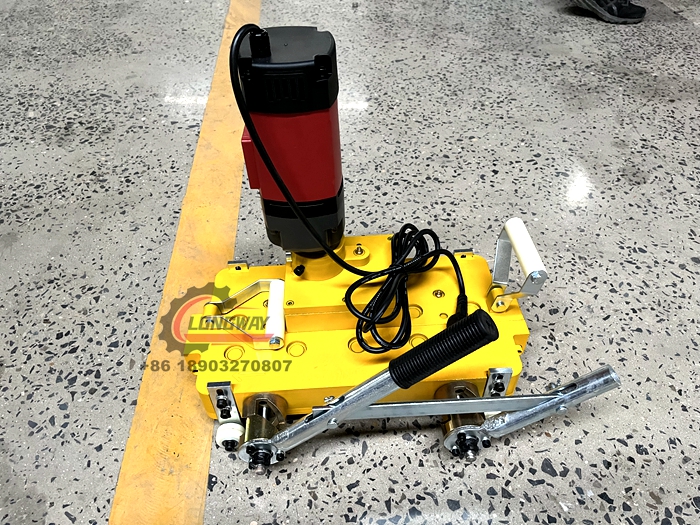steel slitting line factory
The Steel Slitting Line Factory A Comprehensive Overview
In the modern manufacturing landscape, efficiency and precision are paramount, particularly in industries that rely on raw materials such as steel. One significant piece of equipment in this arena is the steel slitting line, a crucial setup for processing steel coils into narrower strips. This article explores the workings of a steel slitting line factory, delving into its components, processes, and importance in the supply chain.
Understanding Steel Slitting
Steel slitting is a process that involves the cutting of wide steel coils into thinner, more manageable widths. This operation is essential for manufacturers who require specific dimensions for further processing or assembly, particularly in industries such as automotive, construction, and appliances. The slitting line factory is designed to enhance production efficiency and ensure that the products meet precise specifications.
Key Components of a Steel Slitting Line
A steel slitting line typically consists of several critical components that work in harmony to achieve optimal results
1. Coil Car To begin the process, steel coils are delivered to the factory on coil cars. These vehicles facilitate the movement of heavy coils to the slitting line.
2. Uncoiler Upon receipt, the coil is mounted onto an uncoiler, which unwinds the coil and continuously feeds the steel strip into the slitting machine. High-quality uncoilers are designed to handle varying coil weights and diameters, ensuring smooth operation.
3. Slitting Machine At the heart of the slitting line is the slitting machine itself. This machine is equipped with multiple rotary blades that cut the steel strip into narrower widths. Precision is crucial here, as the quality of the slitting will affect the integrity and usability of the final product.
4. Spacer and Re-coiling Equipment After slitting, spacers ensure that the strips do not come into contact with one another, preventing damage and ensuring uniformity. The slitted strips are then wound onto recoiling equipment, which compacts the strips into coils of the desired width for easier handling and transportation.
5. Packaging and Inspection Area Finally, the finished slitted strips undergo inspection for quality control before being packaged. This stage is vital to detect any defects that may have occurred during slitting, ensuring that customers receive high-quality products.
steel slitting line factory

The Slitting Process
The steel slitting process typically encompasses several stages
1. Preparation The steel coil is placed on the uncoiler, and the necessary adjustments are made to the slitting machine according to the desired width of the strips.
2. Slitting As the coil unwinds, the rotary blades slice through the steel, creating numerous strips in a single pass. The speed and precision of this operation are critical for maintaining production flow and quality.
3. Re-coiling Once the slitting is complete, the individual strips are recoiled. The coils may then undergo additional processes, such as tension leveling or surface treatment, depending on end-use requirements.
4. Final Inspection After re-coiling, the products are subjected to thorough inspections and testing, ensuring they meet industry standards and customer specifications.
Importance in the Supply Chain
The steel slitting line factory plays an integral role in the supply chain by providing manufacturers with the necessary steel strip dimensions for their specific applications. The versatility and efficiency of slitting lines allow producers to respond swiftly to market demands, thus maintaining competitiveness.
Furthermore, advancements in technology have led to improved slitting line capabilities, including automated systems that enhance production speed and reduce waste. This continuous evolution is crucial for meeting the rising standards of quality and efficiency that modern industries require.
Conclusion
In conclusion, the steel slitting line factory stands at the forefront of metal processing technology, playing a vital role in transforming raw steel into usable strips for various applications. As industries continue to grow and evolve, the importance of steel slitting will remain unwavering, driving advancements in manufacturing efficiency and product quality. Through understanding the intricacies of the slitting line process, stakeholders can appreciate the value it adds to the steel production industry.
-
Roof Panel Machines: Buying Guide, Types, and PricingNewsJul.04, 2025
-
Purlin Machines: Types, Features, and Pricing GuideNewsJul.04, 2025
-
Metal Embossing Machines: Types, Applications, and Buying GuideNewsJul.04, 2025
-
Gutter Machines: Features, Types, and Cost BreakdownNewsJul.04, 2025
-
Cut to Length Line: Overview, Equipment, and Buying GuideNewsJul.04, 2025
-
Auto Stacker: Features, Applications, and Cost BreakdownNewsJul.04, 2025
-
Top Drywall Profile Machine Models for SaleNewsJun.05, 2025








